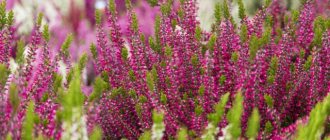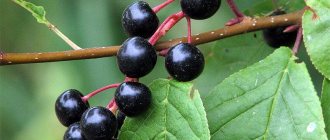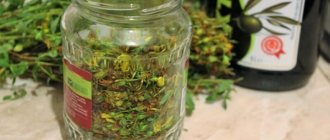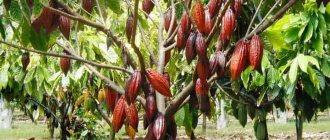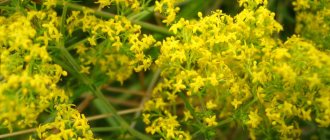What it looks like and where it grows
Saxifraga, or Saxifraga (Pimpinella saxifraga), is a perennial plant of the Apiaceae family with a multi-headed rhizome and branched underground rods up to 20 cm long. The stem of the plant is round and straight, hollow from the inside, with pronounced ribs.
The leaves at the base of the saxifrage are pinnate on petioles, consisting of round or ovoid, large-toothed plates, deeply dissected in the middle of the stem, and simpler at the apex, tripartite with narrow lanceolate lobes. In summer, the berenets bear flowers with white or slightly pinkish petals and five stamens. The buds are collected in corymbose umbrellas up to 8 cm in diameter, consisting of several thin rays. From the end of July to the beginning of autumn, saxifrage seeds ripen - ovoid, naked, up to 2.5 cm long.
Saxifraga blooms from June to the end of August
Bedrenets is widely distributed in temperate climates in Europe, Russia and Asia. It is found mainly in meadows and forest edges, in rare pine and deciduous forests, on hills and along roadsides.
Description
The perennial spicy-aromatic herbaceous plant, or saxifrage (Saxifraga) from the umbrella family (Apiaceae) has more than 150 species and subspecies. Along with the pharmaceutical name "Pimpinella", this medicinal perennial plant is known under the popular names bedrinia, angelica, anison, heart grass, tooth root, goat or goats.
Even the ancient Greeks called it “kaukalis” and used it for medicinal purposes, as well as as a spice for preparing delicious dishes. And in the 16th century, it was mentioned in herbalists as an effective means of combating plague and cholera.
Bedrenets can be recognized by its erect, thin-ribbed hollow stem up to 1 m high and pinnately dissected leaves.
From July to August, small white or pinkish flowers appear, collected in umbels, numbering up to 15 “rays”, producing fruits until September - ovoid, bare brown two-seeds.
Due to its resistance to drought and frost, fallen seeds sprout on loamy, sandy loam soils of slopes, clearings, forest edges, wastelands, along reservoirs, as well as in rock crevices.
Chemical composition
The value of saxifrage in medicine is explained by the rich composition of the plant. Bedrenets contains:
- ascorbic acid;
- beta-carotene;
- phenols;
- essential oils;
- fiber;
- flavonoids and polysaccharides;
- mineral salts;
- gum;
- tannins and coumarins;
- organic carboxylic acids;
- resins;
- saponins and glycosides;
- fixed oils;
- alkaloids.
Some substances in saxifrage pose a certain danger. Bedrenets should be used for treatment with caution to prevent poisoning.
Medicinal herb saxifrage and its chemical composition
Another name for this plant is gap-grass. It has a common origin due to the characteristic feature of its root system to break rocks during growth.
Based on the chemical composition of saxifrage, the following organic substances useful for humans can be distinguished:
- alkaloids;
- glycosides;
- essential substances;
- saponins;
- fatty acid;
- coumarins.
In pharmacies you can find saxifrage herbal tea, which is intended to treat many diseases.
Not all medicinal properties of saxifrage are equally well studied. There is information that the substances contained in it prevent the formation and growth of tumors of various kinds. But there is no official confirmation of this version yet.
Medicinal properties of femoral saxifrage
When used correctly, saxifrage helps cure diseases and preventively strengthens the body. In particular, the plant:
- dilates blood vessels and normalizes blood pressure;
- promotes thinning of mucus and expectoration during colds;
- relieves swelling due to its diuretic effect;
- lowers the temperature during fever and helps to sweat properly;
- normalizes digestion and accelerates metabolic processes;
- has an anesthetic and antispasmodic effect for pain;
- increases the body's resistance to viruses and colds;
- relieves inflammation and fights bacteria;
- improves skin condition when applied externally.
Attention! Saxifraga is especially valued for its ability to dissolve kidney and bladder stones. With minor deposits, berenets serves as a complete medicine.
Methods of preparation and use
To treat diseases, fresh saxifrage juice is used, as well as tinctures and decoctions based on the beneficial plant. In all forms, berenets retains valuable properties and quickly improves well-being.
Decoction
A decoction of saxifrage roots is used for gastritis, kidney stones and joint diseases. Prepare the product as follows:
- Grind the roots of the plant in a volume of 10 g.
- Pour the raw material with 500 ml of hot water.
- Bring to a boil on the stove and boil for 15 minutes.
- Remove from heat and leave covered for an hour.
The finished saxifrage decoction is passed through gauze. You need to consume half a glass up to five times a day.
For bleeding gums and sore throat, you can rinse your mouth and throat with a decoction of saxifrage
Infusion
An aqueous infusion is prepared from the roots of the berenets plant, and it is useful for colds, urolithiasis and bronchitis. The recipe looks like this:
- About 15 g of crushed saxifrage roots are poured into 500 ml of liquid.
- Place in a water bath for 15 minutes.
- Keep covered for four hours and filter.
We recommend reading: Tibetan Lofant: photos, chemical composition, reviews
You need to drink the berenets infusion 125 ml four times a day on an empty stomach.
Saxifraga infusion promotes expectoration and reduces fever
Juice
For skin inflammations and cuts, thigh juice has a good effect. You get it like this:
- The fresh root of the saxifrage plant is thoroughly washed to remove contaminants.
- Grind the raw materials in a blender or meat grinder until smooth.
- Press through a sieve or cheesecloth until clear juice is obtained.
You need to moisten a natural cloth in a vegetable squeeze and apply a compress to the sore spot.
Treatment of damage with saxifrage juice is carried out up to five times a day.
Tincture of femoral saxifrage
A strong tincture of saxifrage helps well with inflammation and joint ailments. It is made according to this recipe:
- The roots of the plant are crushed and 100 g are measured.
- Pour the raw material with 500 ml of medical alcohol in a glass vessel.
- Seal the container and shake well.
- Place for infusion in a dark cupboard for two weeks.
The strained saxifrage preparation is taken three times a day, 15 drops each.
Advice! For rheumatism, gout and arthritis, tincture of femur can be rubbed on the joints to speed up blood flow and reduce pain.
For internal use, it is recommended to dilute the femoral tincture in a small volume of water.
Oncology
Femoral saxifrage is often used in oncology, as it has an antitumor effect. Medicines based on it are effective in the treatment of sarcoma.
For the treatment of cancer:
- Fifteen grams of dry grass or roots are crushed and poured with one glass of boiling water.
- Place in a water bath for half an hour.
- Strain and cool.
- Take seventy grams of decoction three times a day before meals.
Preparation of tincture in water:
- Twenty grams of plant leaves or flowers are poured into one glass of boiling water.
- Place in a water bath for fifteen minutes.
- Cool for forty-five minutes, filter.
- Take seventy grams of tincture three times a day.
Alcohol tincture:
- Herbs and alcohol are taken in a ratio of 1:5.
- Insist for fifteen days in a dark place.
- Take forty drops twice a day before meals.
Use of the herb saxifrage
Traditional medicine uses both the roots and leaves of saxifrage to treat ailments. Products for internal use are prepared mainly from the underground part; greens are often used for compresses and rubbing.
For cough and bronchitis
Bedrenets has good expectorant properties and promotes rapid recovery from bronchitis and tracheitis. The following remedy is prepared for treatment:
- Pour 10 g of dry saxifrage root into a glass of cold water.
- Leave the femoral solution covered at room temperature for eight hours.
- After time, filter and separate the sediment.
- Pour a glass of boiling water over the wet saxifrage raw material for 15 minutes.
- Filter the infusion again.
You need to take the drug from femoris 70 ml three times a day before meals. It is allowed to add a little honey to the infusion, which will enhance the effectiveness of the medicine.
For neuroses
Bedrenets has a beneficial effect on the nervous system and helps to better cope with stress. For increased irritability and anxiety, prepare an infusion of the plant:
- Grind 15 g of dry saxifrage root.
- Pour a glass of boiling water over the raw material.
- Leave covered to infuse for 40 minutes.
- Strain.
Saxifraga infusion should be consumed three times a day, using a large spoon. The product will help you relax, improve your mood and normalize night sleep.
For immunity
For preventive purposes, to increase immune resistance, it is recommended to use a decoction of femoral leaves. It is made according to this recipe:
- Dry saxifrage leaves are finely chopped in an amount of 50 g and filled with 200 ml of water.
- Place the thigh solution on low heat and heat for ten minutes.
- Remove from the stove and cool under the lid for an hour.
The strained drug is taken 100 ml on an empty stomach. To strengthen the immune system, it is enough to use the product for a week.
With a runny nose
For a runny nose, fresh saxifrage juice is beneficial. It is prepared like this:
- Wash and dry a handful of fresh thigh leaves.
- Grind the plates using a blender or in a meat grinder.
- Squeeze the resulting pulp through folded gauze.
Three drops of saxifrage juice are instilled into each nostril up to four times a day. The product relieves nasal congestion well and eliminates bacterial processes.
To avoid burning, before instilling femoral juice, you can dilute it with water.
For sand and kidney stones
Saxifraga is highly valued for its ability to dissolve urate stones. If there are deposits in the kidneys, you can prepare the following decoction:
- About 15 g of finely chopped dry root is poured into 250 ml of water.
- Bring to a boil on the stove and boil for 15 minutes.
- Leave covered to infuse for five hours.
The strained product from the femur is drunk 70 ml in between meals up to four times a day. In total, the course of therapy is continued for up to two weeks.
Warning! In case of large kidney stones, it is better to avoid the femoral stone. The plant can dislodge stones and cause severe colic.
For hypertension
Saxifraga lowers blood pressure and helps in the initial stages of hypertension. For treatment, an alcohol tincture of the plant is used, and it is made as follows:
- About 100 g of fresh femoral leaves are cut and poured with 500 ml of vodka.
- Close the glass vessel and place it in a dark, cool cabinet for two weeks.
- Remove the container daily and shake it thoroughly.
- After the expiration date, filter.
We recommend reading: Dandelion tea: beneficial properties, how to make
The finished saxifrage tincture is taken 5 ml twice a day, pre-diluted with 40 ml of water. The product can be used for up to a month, then take a break of a similar duration.
For rheumatism
For joint ailments, the femur is used both internally and externally. This infusion brings good results:
- Dry saxifrage rhizome is ground into powder in a blender.
- Measure out 10 g of raw material and steam 250 ml of fresh boiling water in a thermos.
- Closed, infuse for 45 minutes.
The filtered drug is consumed 20 ml three times a day. The product is also used for compresses - a cloth napkin is moistened in a hot infusion of saxifrage and applied to sore joints.
For stomach ulcers
Bedrenets soothes irritated mucous membranes of the stomach and helps cope with the symptoms of chronic ulcers. The medicinal preparation from saxifrage is made as follows:
- Brew 30 g of dry leaves of the berenets plant with a glass of boiling water.
- Leave covered for an hour.
- Pass the product through cheesecloth to filter.
The drug must be taken twice a day - in the morning before breakfast and in the evening before dinner, half a glass. Treatment with saxifrage is continued until symptoms disappear.
For ulcers and gastritis, the saxifrage infusion is heated to a warm temperature before use.
Recipes for various diseases
For the treatment of many diseases, a decoction and tincture of the roots and aerial parts of the saxifrage femur is used.
To normalize the activity of the nervous system:
- Fifteen drops of the plant's decoction are added to linden tea.
- Take twice a day.
Elimination of pigment spots:
- The root of the plant is washed, dried, crushed into pulp, and the juice is squeezed out.
- Gauze wipes are moistened with the juice and applied to the affected areas for fifteen minutes five times a day.
Lung diseases and diabetes:
- One tablespoon of raw material is poured with boiling water in the amount of two hundred milliliters.
- Boil for ten minutes, then leave for half an hour.
- Strain and add honey.
- Drink three tablespoons of medicine three times a day.
To remove kidney stones:
- One teaspoon of raw material is poured into one glass of boiling water.
- Leave for two hours and strain.
- Add honey and pre-prepared rosehip infusion.
- Take twice a day. The course of therapy is three weeks.
Preparation of medicinal tea:
- Two grams of crushed saxifrage femur root are mixed with honey.
- The mixture is added to linden or raspberry tea.
You can also brew one tablespoon of herb in one glass of boiling water, leave for fifteen minutes, add honey to taste and take as tea.
Application in cosmetology
Saxifraga is used in home cosmetology, primarily to lighten facial skin. Fresh juice of the femoral plant helps to cope with age spots and freckles. The application algorithm is as follows:
- The washed young leaves of femoris are passed through a meat grinder.
- Leave the resulting saxifrage pulp for two hours in a cool, dark place.
- Squeeze out the pure juice through cheesecloth.
Use the resulting squeeze of the thigh to wipe the skin of the face three times a day, avoiding the areas around the eyes.
Saxifraga essential oil is also popular in cosmetology. It has a pleasant light aroma and good cleansing and softening properties. Femoral extracts can be found in shower gels, creams, shampoos and body care milks.
Beneficial features
The roots contain an unpleasant-smelling essential oil (0.7%; saxazulene was found in the composition), furocoumarins and coumarins (pimpinellin, isopimpinellin, umbelliferon, bergapten, isobergapten, spondin), tannins, fatty oil, flavonoids, resins, sugars, saponins, pectins , terpenoids, aromatic and polyacetylene compounds, bitters, gum, benzoic and acetic acids.
During the flowering period, the leaves contain ascorbic acid (0.07%) and carotene. The stems and leaves of the plant contain protein (up to 11%), fat (2.6%), fiber (32%), ash (8.5%), essential oil (0.2%), potassium and calcium salts. The smell is inexpressive, weak, the taste is slightly astringent, tart, refreshing.
The inflorescences contain flavonoids, the fruits contain 29% fatty oil, essential oil (up to 3%), 0.17% coumarins, phenols, flavonoids.
Contraindications
The medicinal properties and contraindications of femoral saxifrage are combined with each other. It is necessary to stop consuming the plant first of all if you have an allergy. When first used, it is recommended to lubricate the skin on the bend of the elbow or on the wrist with the juice of the thigh grass and make sure there is no redness, rash or itching.
During pregnancy, saxifrage is taken only with the permission of a doctor. During breastfeeding, the plant is prohibited for use due to possible allergies in the baby.
Attention! Berenets should not be offered to children under 12 years of age; the herb can do more harm than good.
Collection and preparation
The leaves and stems of saxifrage are collected in May before flowering, and the roots are dug up from September until the November frosts. In the latter case, plants should be selected as large as possible; more valuable substances are concentrated in their underground parts.
The collected raw material of the thigh is washed under the tap and laid out to dry in a warm, ventilated place away from sunlight. After the moisture has evaporated, the workpieces are distributed into paper bags or glass jars and placed in a dark cabinet with a temperature of up to 25 ° C.
Saxifraga leaves can be used for a year, and the roots can be used for up to three years.
Proper collection of plants
In herbal medicine, both the herbaceous parts of saxifrage are used - leaves, stems, as well as its roots and seeds. As for collecting leaves and stem parts, this should be done in May. Drying must be done in the shade. After which, the resulting material can be crushed.
The juicy leaf of saxifrage is also frozen, without losing its medicinal properties.
At the end of summer, seeds are collected.
Early spring or late autumn is the best period for digging up rhizomes. After thoroughly rinsing it from soil and sand, it is dried in a well-ventilated place. Then cut into the necessary parts.
Like many other medicinal herbs, it is appropriate to store dry saxifrage preparations in a transparent container, using dark places.
If you do not plan to harvest the rhizomes, you can collect the upper part of the plant. It is recommended to cut no more than 80% of the total volume of the bush. This approach will help the saxifrage recover before the next trimming of the green part.
It is very important to be careful when choosing a bush to collect. Since in nature there are very similar plants that have poisonous properties for the human body.
When searching for saxifrage, you should pay attention to:
- appearance of the plant;
- features of growth;
- the time period characteristic of the processes of flowering, formation of the stem and seed sac.
There are several types of this type of culture. They differ from each other not only in the shades of the buds, but also in the size of the bush. The leaves have a slightly oval shape. All plates are collected in a root rosette. Often saxifrage grows up to 70 cm in height. Blooms pink, white, red.
Another unique property of saxifrage is its excellent tolerance to different temperature fluctuations. The bush develops well at low and high thermometer readings.

